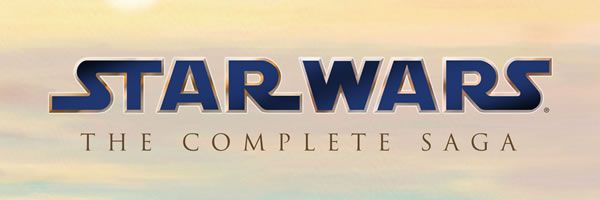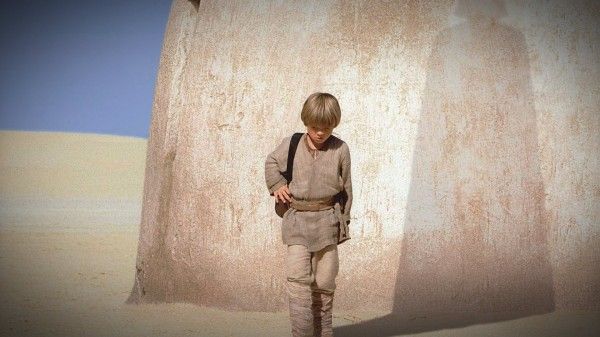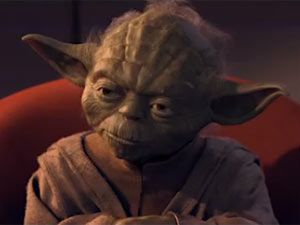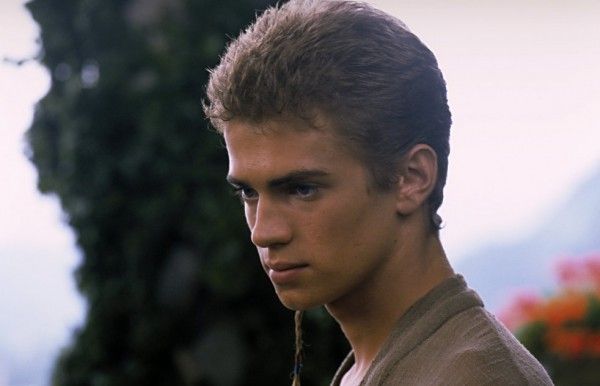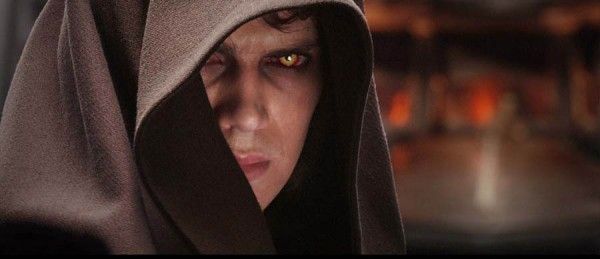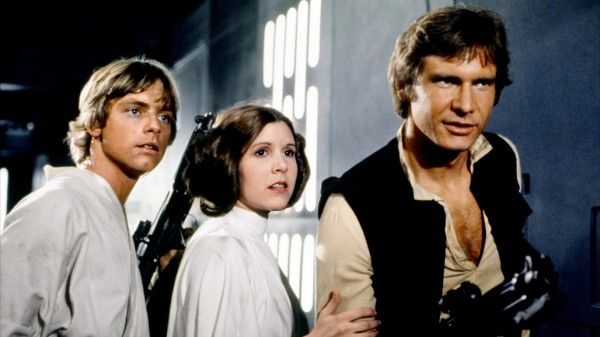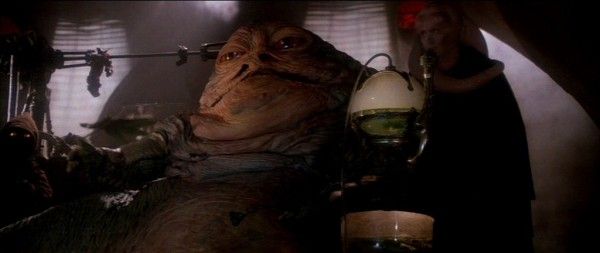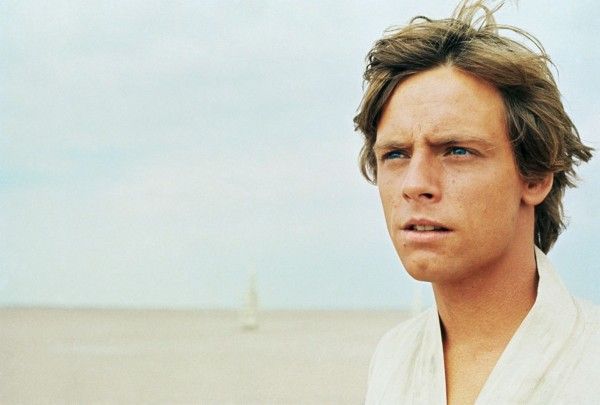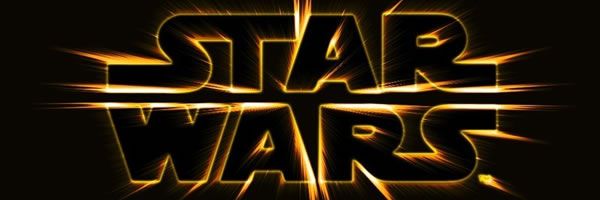It’s been a couple of weeks since the release of Star Wars on Blu-ray, and we’ve all said our share of “NOOOOOOâ€s over the whole “NOOOOOO!!!†unpleasantness. Once again, fans lamented the further erosion of their beloved franchise thanks to an owner/creator who now seems to view it all less as a cinematic classic and more as an extended game of chicken between him and the audience. The nine-disc Blu-ray set continues that grand tradition… and once again, after swearing that they would stand firm, the fan base caved. The set appeared to record sales, and complaints about the new changes were quickly drowned out by the sound of cash registers.With that in mind, the question now becomes whether the fans have bought a bill of goods: whether the Blu-ray set delivers nothing but another box to sit on the shelf and gnaw at the souls of true believers. I’m happy to report that – unwelcome tweaks notwithstanding – Lucasfilm delivers a magnificent set that does justice to the iconic saga. Hit the jump for the full review.
Overview
The set contains nine discs in a handsome case: one for each of the six films, plus three discs containing a staggering array of additional features. Presumably everyone is familiar with the movies themselves, so we’ll focus more on the discs than the narrative they contain. We’ll break each disc down individually, covering the good, the bad and the in-between of each one.
Disc 1: The Phantom Menace
The set presents the films in narrative order rather than by the date of release; right off the bat, that may get under hardcore fans’ skin. The Phantom Menace further suffers from the fact that it was the last of the six to be shot on 35mm film instead of digital cameras. That makes the visual transference a little tricky, and the resulting image possesses a certain “video-y†quality. That said, it still looks spectacular and the film’s stunning set pieces – too easily overlooked – retain their wonder and astonishment. The incredible lightsaber duel, stellar pod race and little-mentioned underwater sequence on Naboo make the not-insignificant flaws (the awful dialogue, the dodgy performers, gratuitous use of Jar Jar) easier to swallow, and while CGI technology has advanced considerably in the ensuing decade, the effects still hold true.
The biggest change here is the insertion of a digital Yoda to replace the old puppet. It works quite well: making the film more of a kind with Episodes II and III, while eliminating the distracting contrast between real-world animatronics and the CGI scenery surrounding it. It’s a pity the wizardry can’t address the film’s more serious problems – or at least lower the urge to strangle Mr. Binks with his own earflaps – but we’ve all made our peace with that (or not) long ago.
The real selling points here are the two audio commentaries included on the disc. The first is identical to the one on the older DVD: good, but nothing worth rushing out for. The second one holds the real juice: archived excerpts from just about every person associated with the production (including George Lucas, Dennis Muren and most of the principal cast). It’s pure gold, full of enough insight and tidbits to make even the biggest Menace hater to finish a screening with a smile on his face. The best comments come with sound designer Ben Burtt, who talks about the methods he used to develop each audio effect. Liam Neeson and Ewan McGregor deliver solid material as well, and McGregor’s thoughts on following in the footsteps of Alec Guinness are quite sweet.
Disc 2: Attack of the Clones
I maintain that Attack of the Clones is the weakest of the entire series. The romance between Anakin Skywalker and Padme Amidala arrives stillborn from the get-go, with embarrassingly cheesy lines and a lack of chemistry between the two actors that borders on the criminal. As with Phantom Menace, the visuals make up the difference, from the showdown between Obi-Wan Kenobi and Jango Fett to the lengthy climax that features Yoda busting out with his lightsaber for the first time ever. The film was shot digitally, which helps the images stand out much more readily, and the tinkering remains absolutely minimal. The audio commentaries follow the same pattern as Menace, with the DVD track copied over to Blu-ray and a second track added that any real Star Wars fan will relish.
Disc 3: Revenge of the Sith
Copious “NOOOOOO!!!†notwithstanding, most fans agree that Sith represents the best of the three prequels. It also looks the best on Blu-ray as well, with sterling clarity that makes those lava fields really pop. The image shakes the glassiness dogging Parts I and II, and the storyline corrects a lot of glaring problems that troubled earlier prequels. Lucas delivers a sterling trio of bad guys – Count Dooku, General Grievous and the Emperor himself, who almost redeems the whole trilogy single-handedly thanks to some terrific work from Ian McDiarmid. (Keep hiring those Scotsmen George; they do good work.) Lucas understands how to deploy their villainy to maximum effect, and John Williams’ score delivers the searing emotional beats missed by the still-awful dialogue.
Which isn’t to say that the film is perfect. Lucas plants a big, wet continuity error in our laps right at the end, when the mother remembered by Princess Leia dies the instant she’s born. Similar boners crop up throughout the picture and the climactic duel between Obi-Wan and Anakin – intended to be the best of the series – gets swallowed up by the green-screen landscape surrounding them. That said, Sith still helps the prequels end on a high note and keeps the most rabid fans more or less placated.
The second audio commentary here is an absolute must-hear, with tidbits on the origins of the Wilhelm scream among other tasty goodies.
Disc 4: A New Hope
A number of fans wrote off the prequels as a total loss, meaning that Episodes IV through VI need to justify the expense of the Blu-ray set on their own. They largely do, though they still suffer unduly from post-theatrical pokes. Kenobi delivers a new krayt dragon call that sounds more like a hairdresser losing her wig than anything truly frightening. Other shortcomings are all-too familiar: the unconvincing addition of Jabba the Hutt, the wonky dewbacks, the “Han shot first†debacle subsequently obliterated by a shortened version of the key shot in the DVD release.
But frankly speaking, a lot of A New Hope’s problems have nothing to do with the Special Edition changes… and in fact herald some of the difficulties of the prequels. Lucas couldn’t write dialogue any better in 1977 than he can now, and some of the lines here will curve your spine. The performances lag behind Empire and Jedi as well, masked by the fact that no one had ever seen a film like this when it was first released. Still, it’s A New Hope, and the gorgeous visual transfer highlights both the original material and the better CGI elements (like the X-wings in the final fight) beautifully.
(It goes without saying that Lucas could have erased a huge amount of ill will by remastering the theatrical cuts of IV-VI and including them in this set. Their absence keeps an otherwise terrific set from approaching perfection.)
The audio commentaries are as strong as they are in the rest of the set; the second one includes comments from the late Alec Guinness, as well as the normally reluctant Harrison Ford, and key figures like Kenny Baker and Peter Mayhew. Carrie Fisher’s razor-sharp wit steals the show, but Mark Hamill gets some good digs in as well.
Disc 5: The Empire Strikes Back
Now this is pod-racing. When Lucas made the decision to step back from writing and directing duties, he instantly alleviated the series’ biggest problems: poor dialogue and stiff performances. Irvin Kershner arrived behind the camera, bringing a close rapport with the cast and an understanding of the humanity within the spectacle. On the screenplay front, Lawrence Kasdan keenly grasped the differences between writing and speaking: crafting conversations with rhythm, meter and genuine wit instead of amateurish exposition. The result is the unquestionable high point of the series: a perfect space opera with all the excitement, romance, and mythic tropes that any fan could ask for. The Special Edition elements enhance and improve the original rather than acting as a distraction, and the characters’ journeys hit their darkest and most complex period of all six films. Nothing feels out of place, and the twin audio commentaries continue to justify the purchase all on our own.
Disc 6: Return of the Jedi
Of all six films, Jedi has suffered the most from Lucas’s latest tinkering. It gets worse here with Vader’s climactic moaning and the CGI-blinking Ewoks that frankly give everyone the creeps. The bleakest moment arrived before this set, however, when Hayden Christensen was inserted into the final shot. (And riddle me this, Caped Crusader: why does Anakin get to spend eternity in his Padme-banging prime, while Obi-Wan “I didn’t actually butcher any children†Kenobi is decrepit and old?) Jedi already stood as the weakest of the original trilogy – tasked with wrapping the whole thing up rather than generating any energy on its own – and the changes only further harm its case. That said, Kasdan’s dialogue still stands head and shoulders above that in Episodes I-IV, and the copious set pieces (Jabba’s palace, the speeder chase, the final showdown between Luke and Vader) continue to hold considerable power. The sound and video quality on the Blu-ray highlight them all perfectly. If only they could give us the yub-yub song back at the end…
Discs 7 and 8: Archives
The two special features discs are both intoxicating and a little frustrating. They’re built for casual browsing rather than specific searches: great for an initial plunge, but difficult if you want to find one specific piece. Discs 7 and 8 break the series in half – Disc 7 contains material for the prequels, Disc 8 the original trilogy – and organize their material by location in each film. So Disc 7 contains an “Episode I†section, further broken into “Naboo,†“Coruscant†and “Tatooine†sub-sections. Each “planet†contains interviews, cut scenes, concept images and more: enough to fill entire evenings with blissful immersion in Star Wars minutia. The deleted scenes hold some real gems, such as Luke’s conversation with Biggs Darklighter on Tatooine and expanded sequences with the Wampa on Hoth. But every little tidbit carries its share of surprises, including fascinating breakdowns of each prop or model that almost justify feature presentations on their own. Finding a given piece takes a little intuition and sometimes leads the viewer down blind alleys. But nothing goes to waste and those wrong turns always lead to something fun.
Disc 9: Star Wars Documentaries
The ninth and final disc carries a series of documentaries on the series. The showcase is three specials – originally shot for TV – on A New Hope, Empire and Jedi respectively. They’ve been difficult to find previously and the hold almost as much interest as the movies themselves… though none of them quite match From Star Wars to Jedi, a doc released with one of the VHS sets and conspicuously absent in this one. (You can check it out on YouTube, starting here) The disc also contains four additional documentaries: one covering Star Wars technology, one breaking down the development of the dewbacks for the Special Edition, a 30-year retrospective featuring the key players in Empire, and an 84-minute beast about the 501st Legion (the fans who march as Stormtroopers for various charities.) The tech stuff is a little dry and the dewback feature probably belongs somewhere else, but the 501st Legion piece is an extremely cool homage to the series’ biggest fans.
The disc concludes with another fascinating/frustrating collection, this one covering various pop culture parodies of the saga. It draws clips from all manner of sources: Saturday Night Live, That 70s Show, How I Met Your Mother, Family Guy and some of the tastiest cuts from the brilliant Robot Chicken. It also contains a clever Volkswagen ad featuring a little kid as Darth Vader, and a lot of great promo clips from the Spike cable network. Some fairly bizarre bits are included as well – including an extended sequence from Candid Camera in the 70s and an embarrassing song-and-dance number from the Donny and Marie show. (The inclusion of the last bit makes one wonder why Lucas didn’t include the infamous Star War Holiday Special here; it’s mentioned in a couple of places and delivering it on Blu-ray after years of pretending it doesn’t exist would seriously blow people’s minds.)
The comedy clips are a serious mixed bag, with some truly funny stuff mixed in with weak or reaching material. Unfortunately, the disc offers no way to access the individual bits: you have to watch the whole thing and fast forward to the parts that work. It’s a surprising misstep in an otherwise technically flawless set.
Conclusion
The quality of the Star Wars Blu-ray set easily outshines most of the controversy that heralded its release. The hated changes constitute only a few minutes, contrasted by hours and hours of great material that no serious fan should miss. The flaws – and the more conspicuous absence of the original theatrical cuts of IV-VI – only illustrate how great the rest of the set is. Had Lucas given into his fans and delivered the theatrical versions, he might have had a set for the ages. As it is, we’ll have to “settle†for a truly terrific collection, and hope the Bearded One finally gives us his initial vision next time around.

